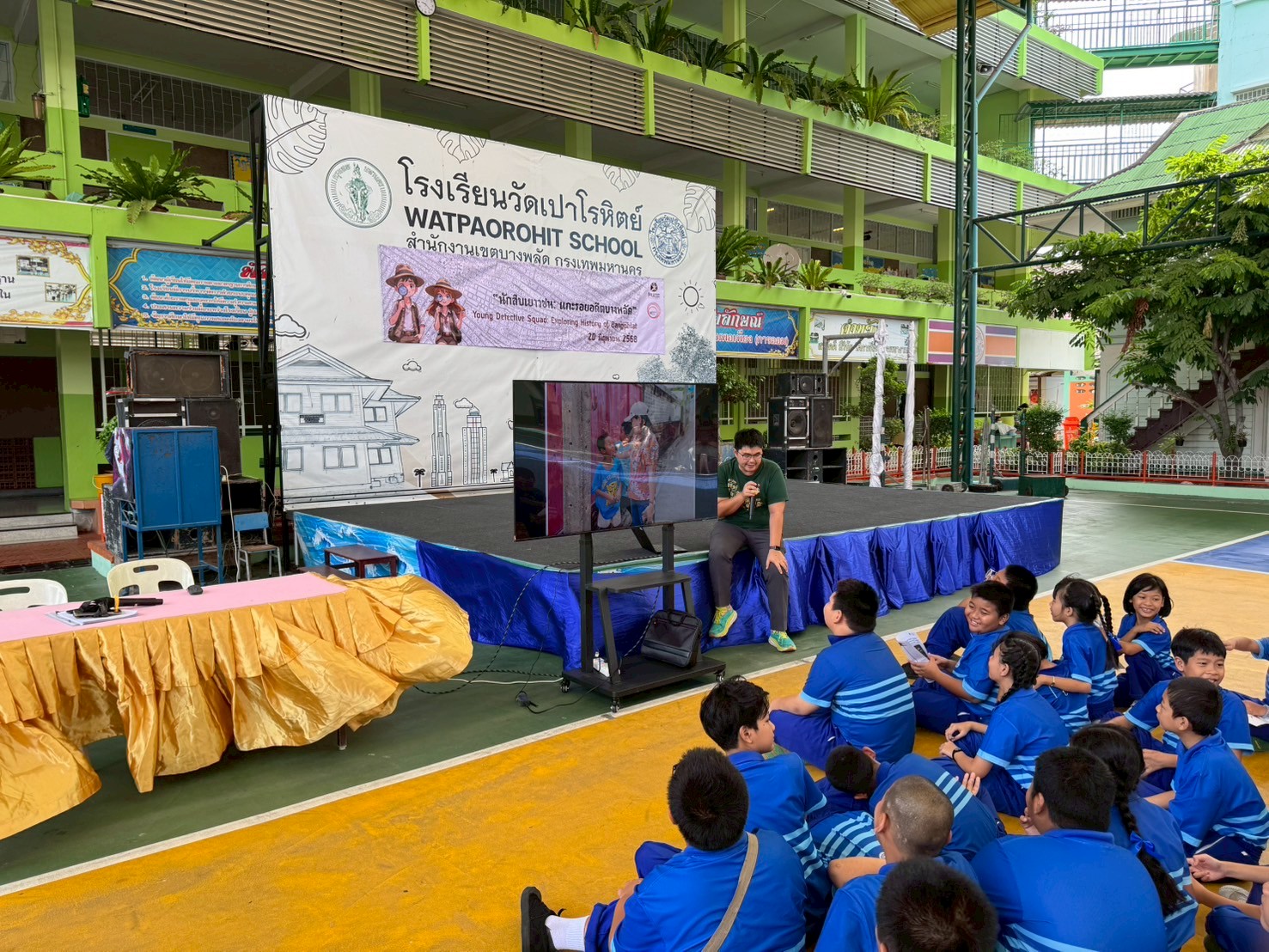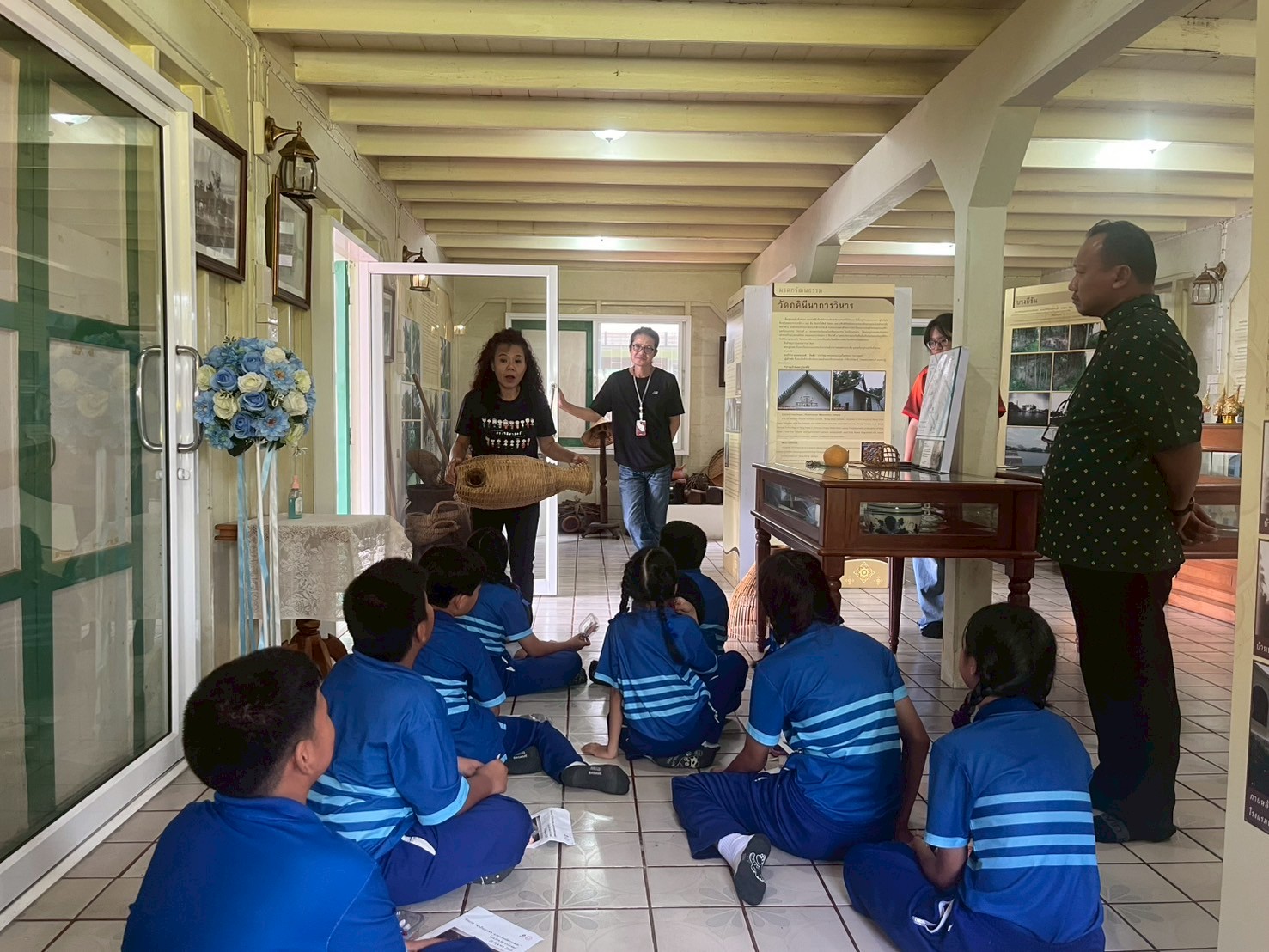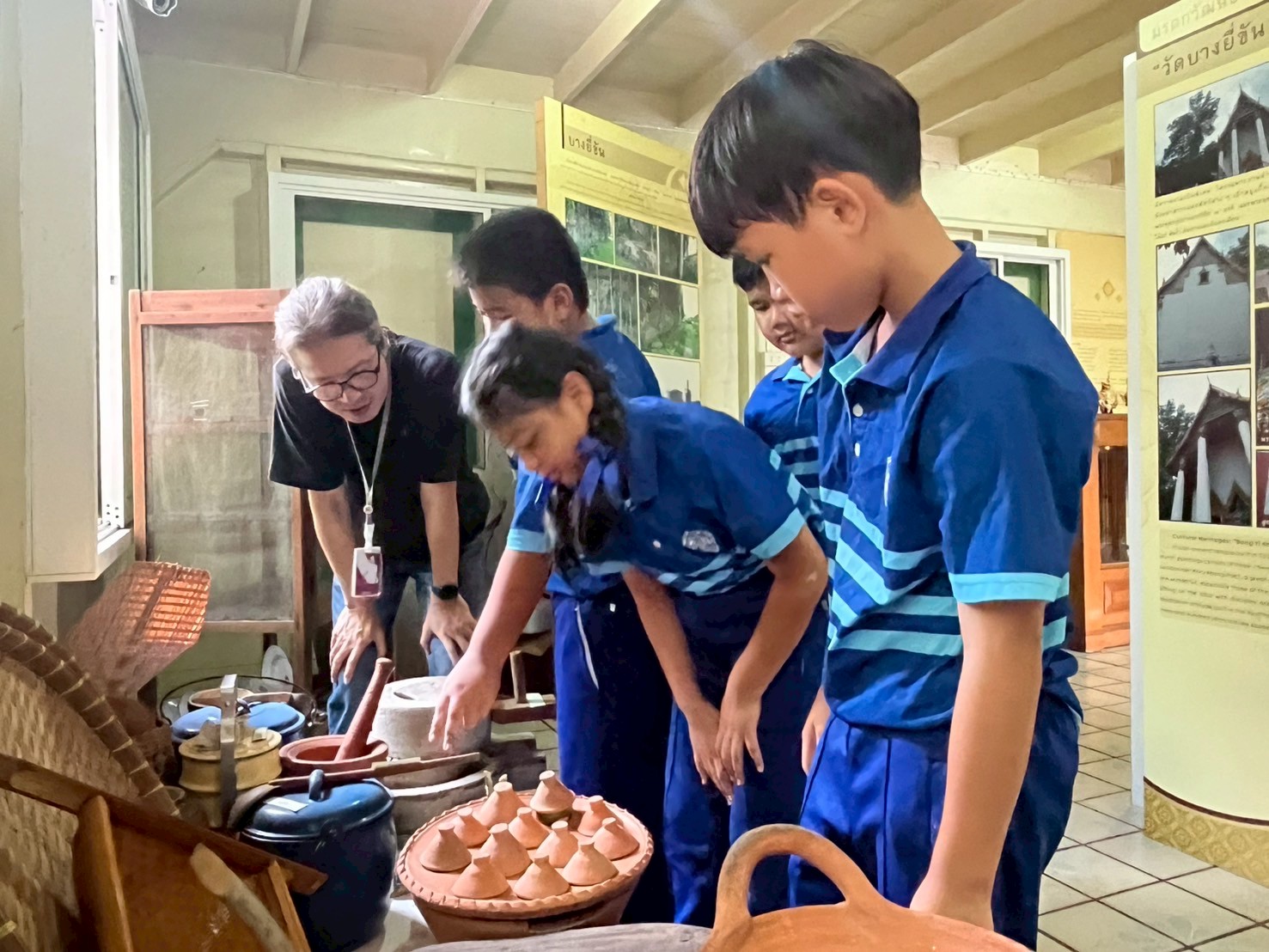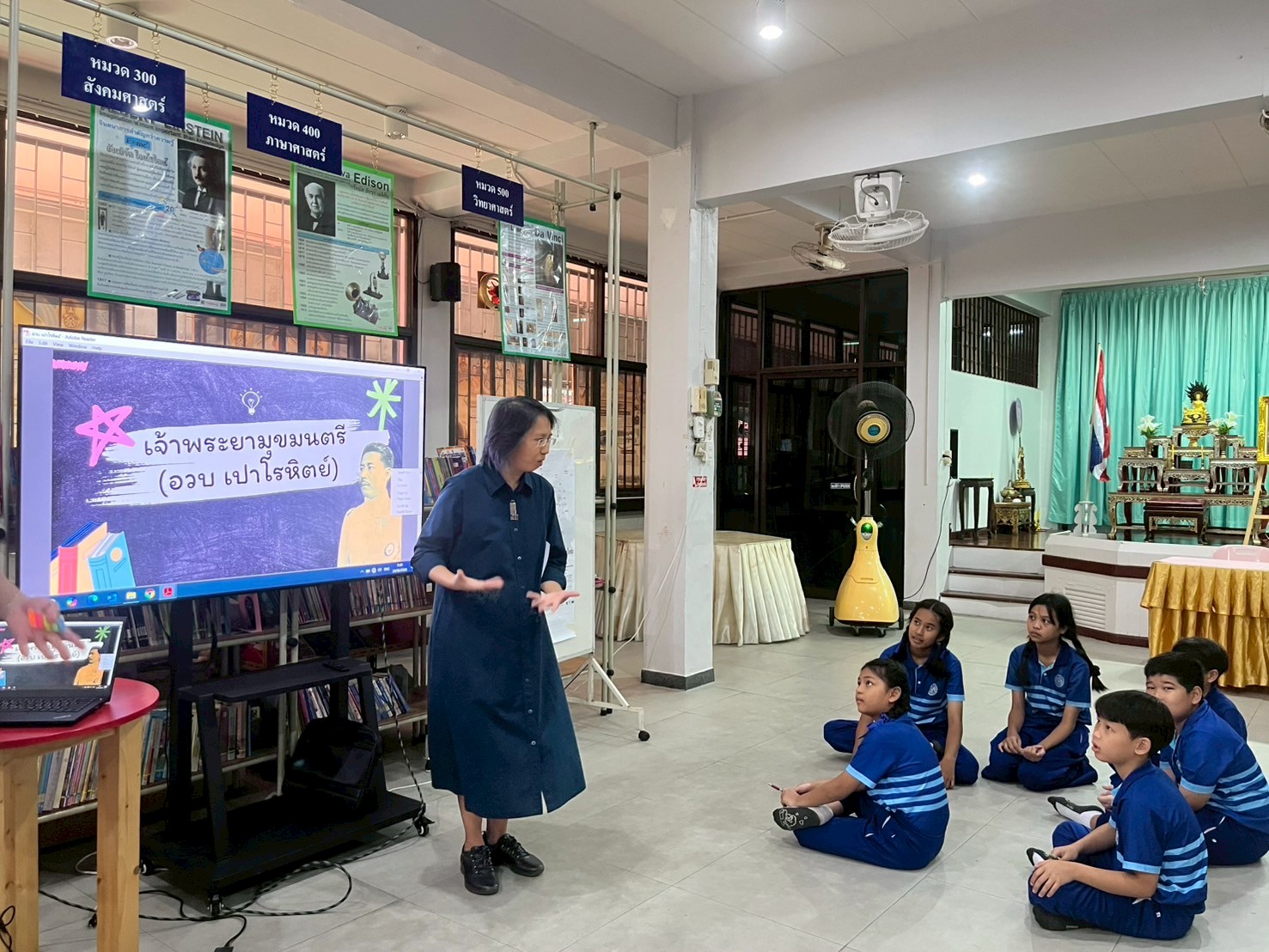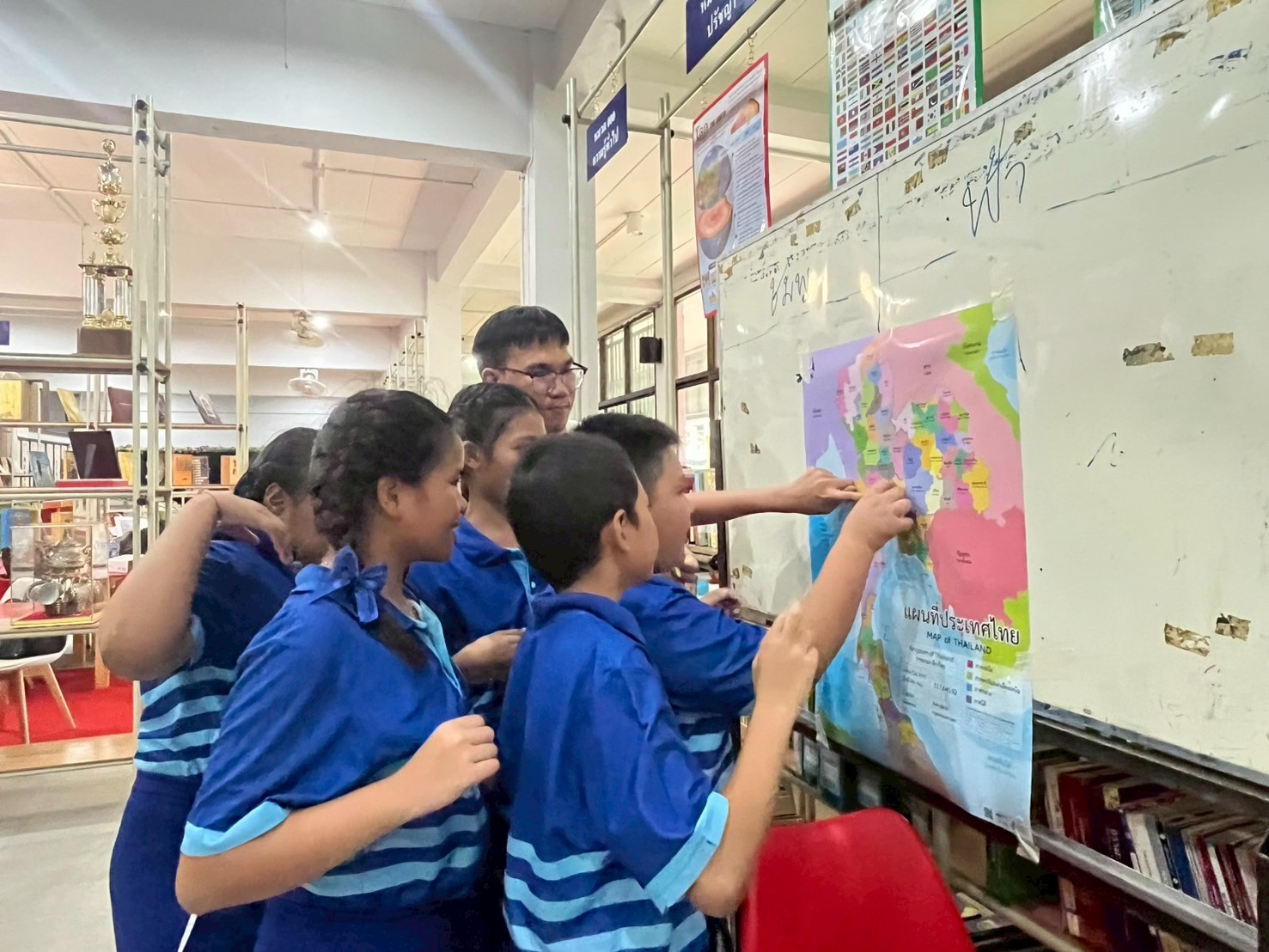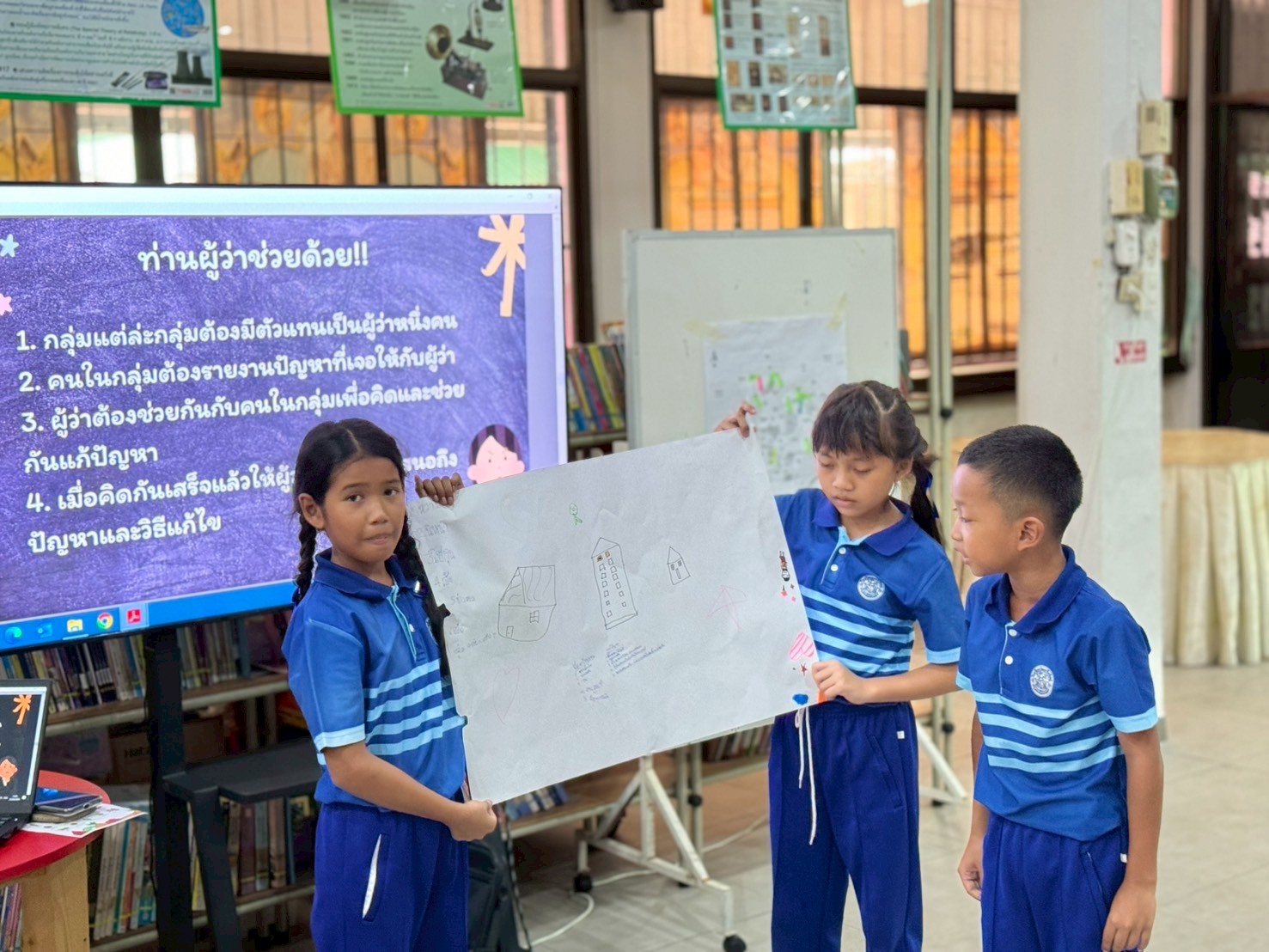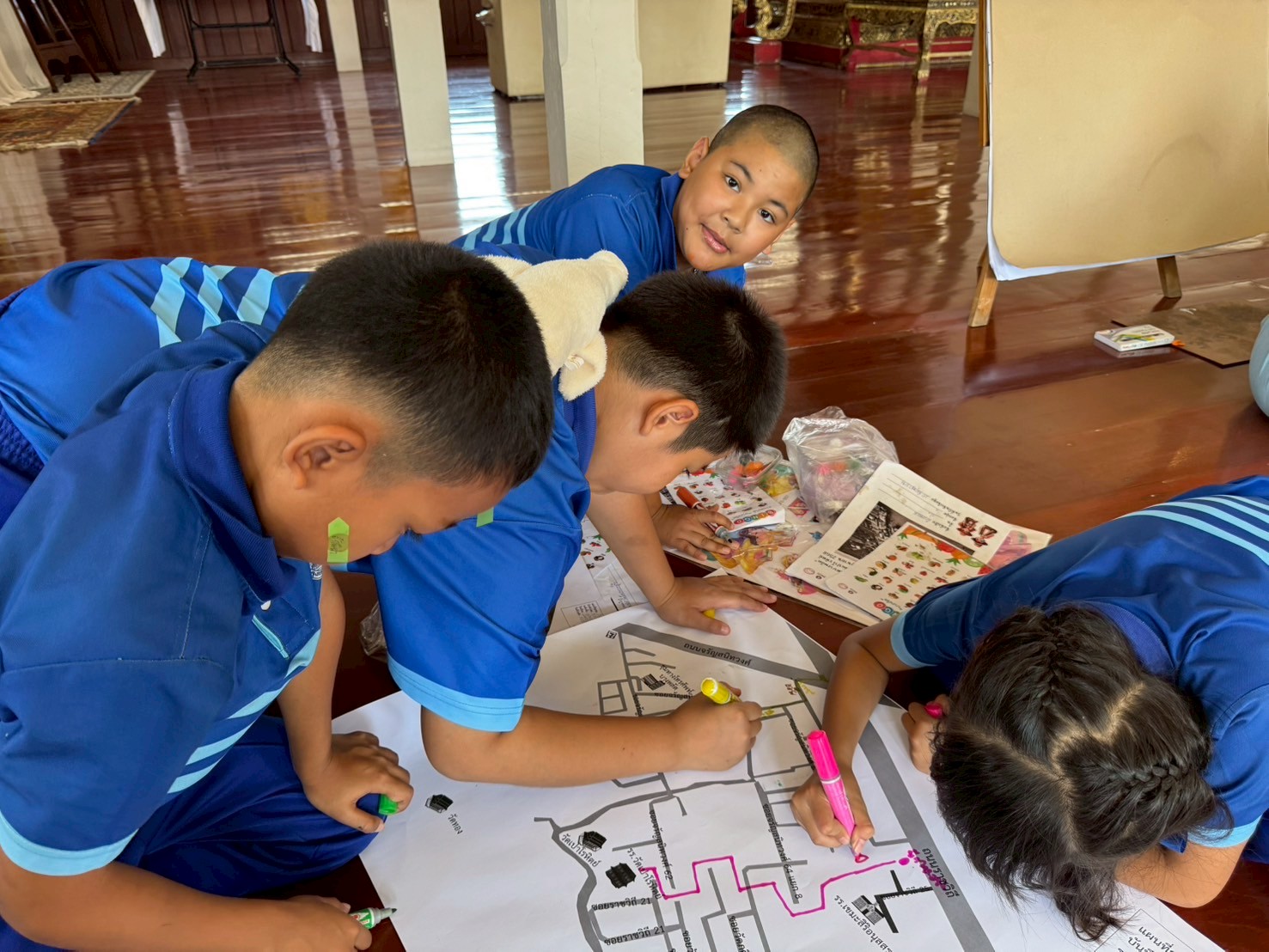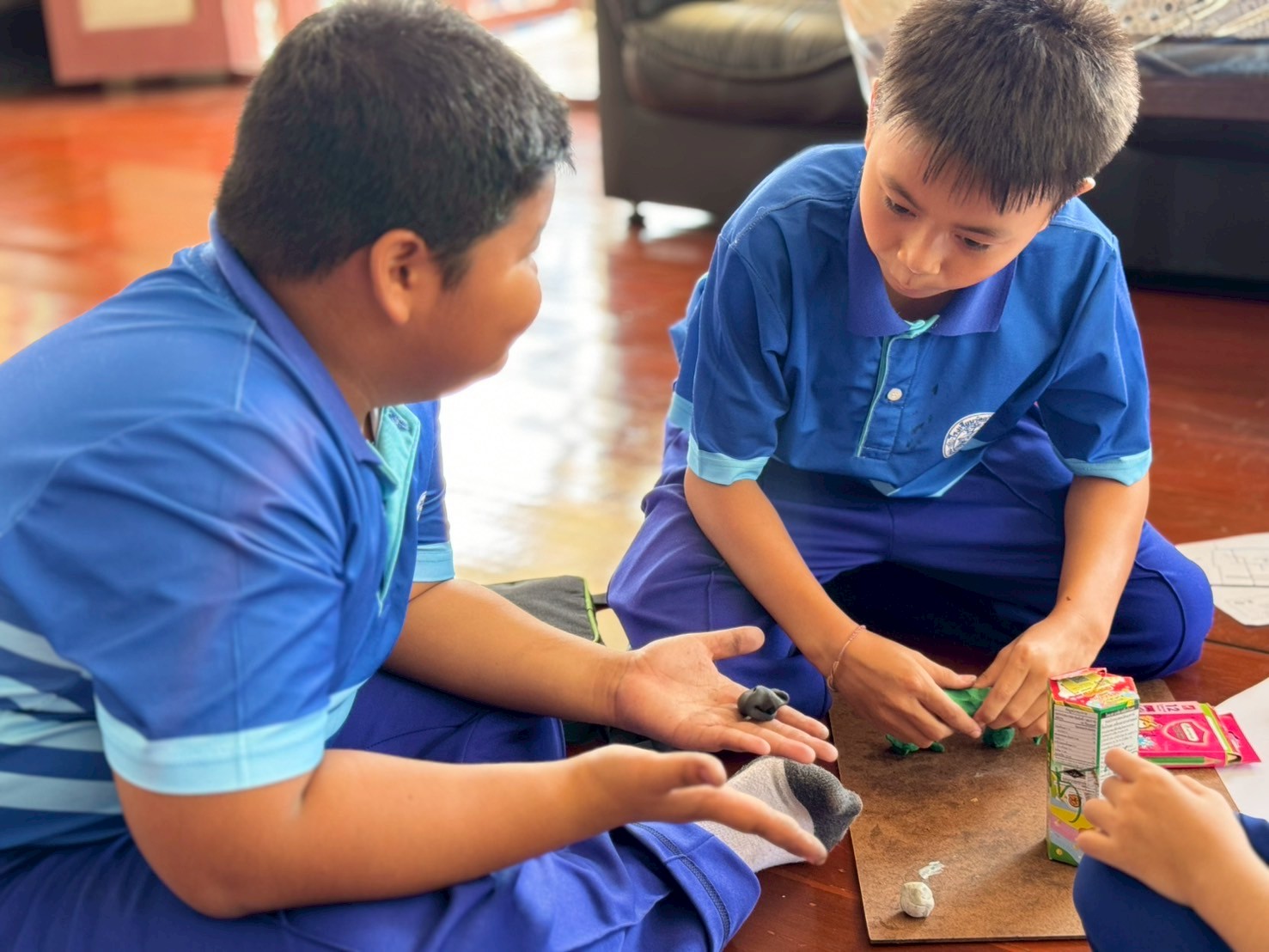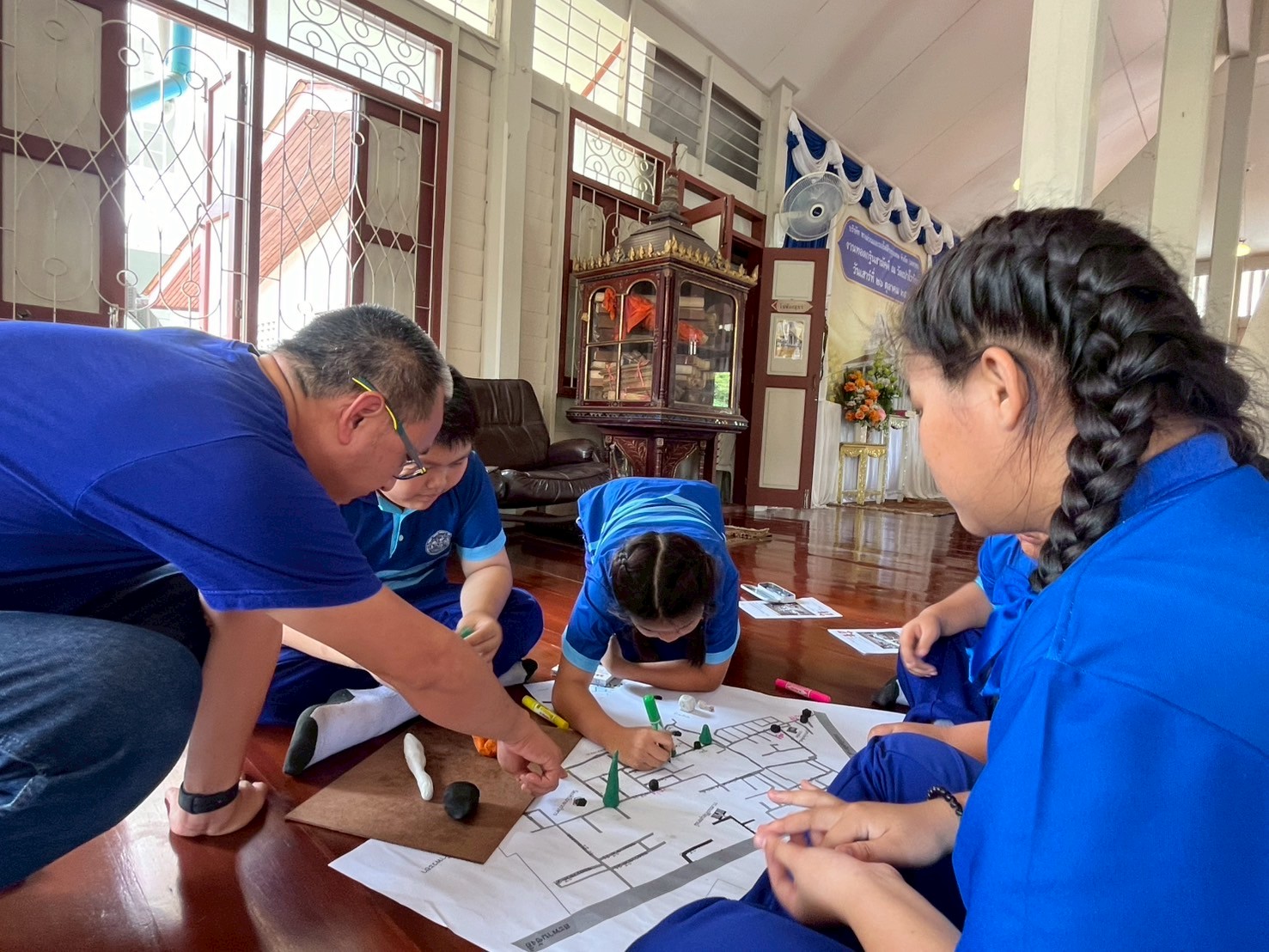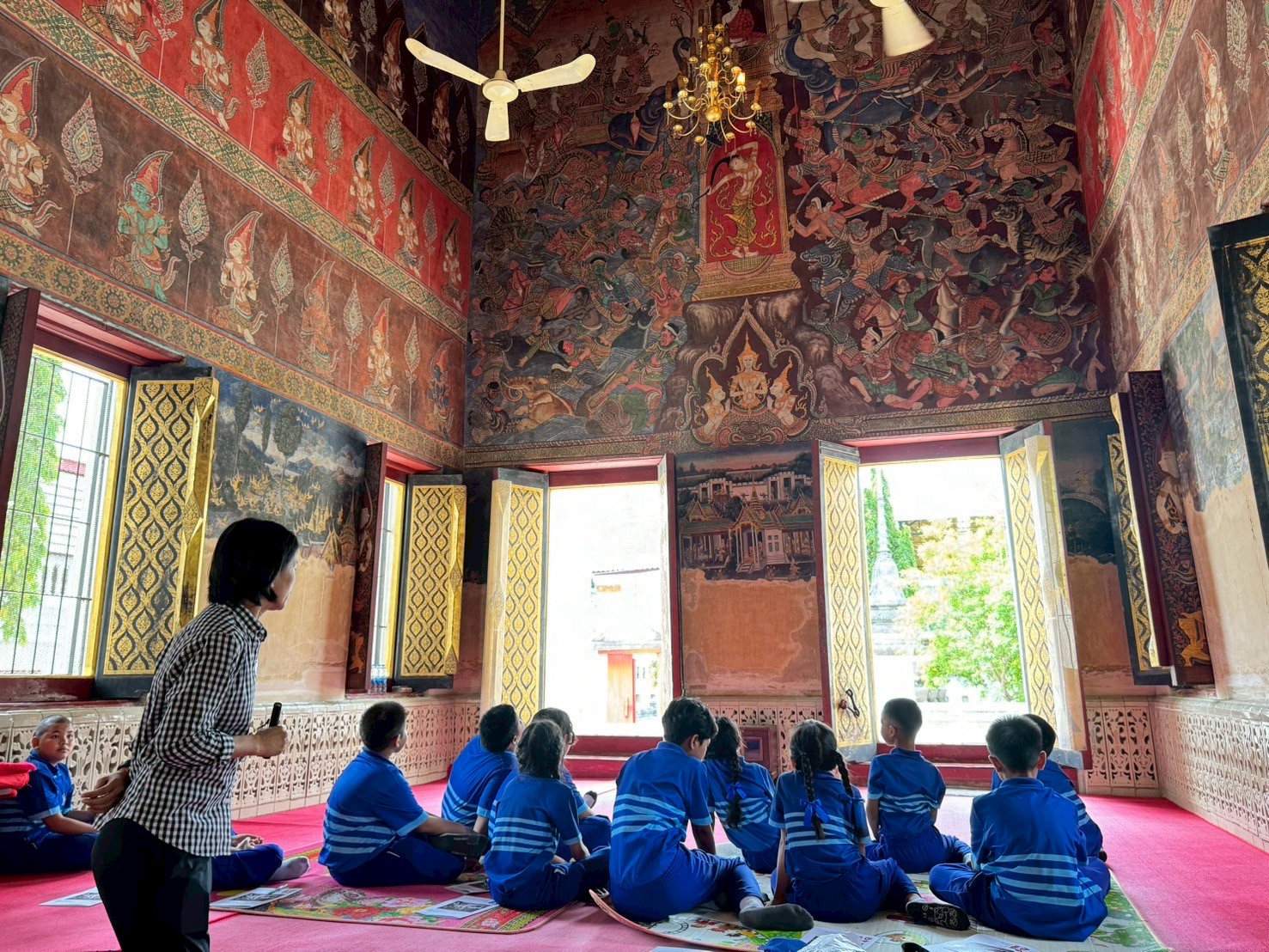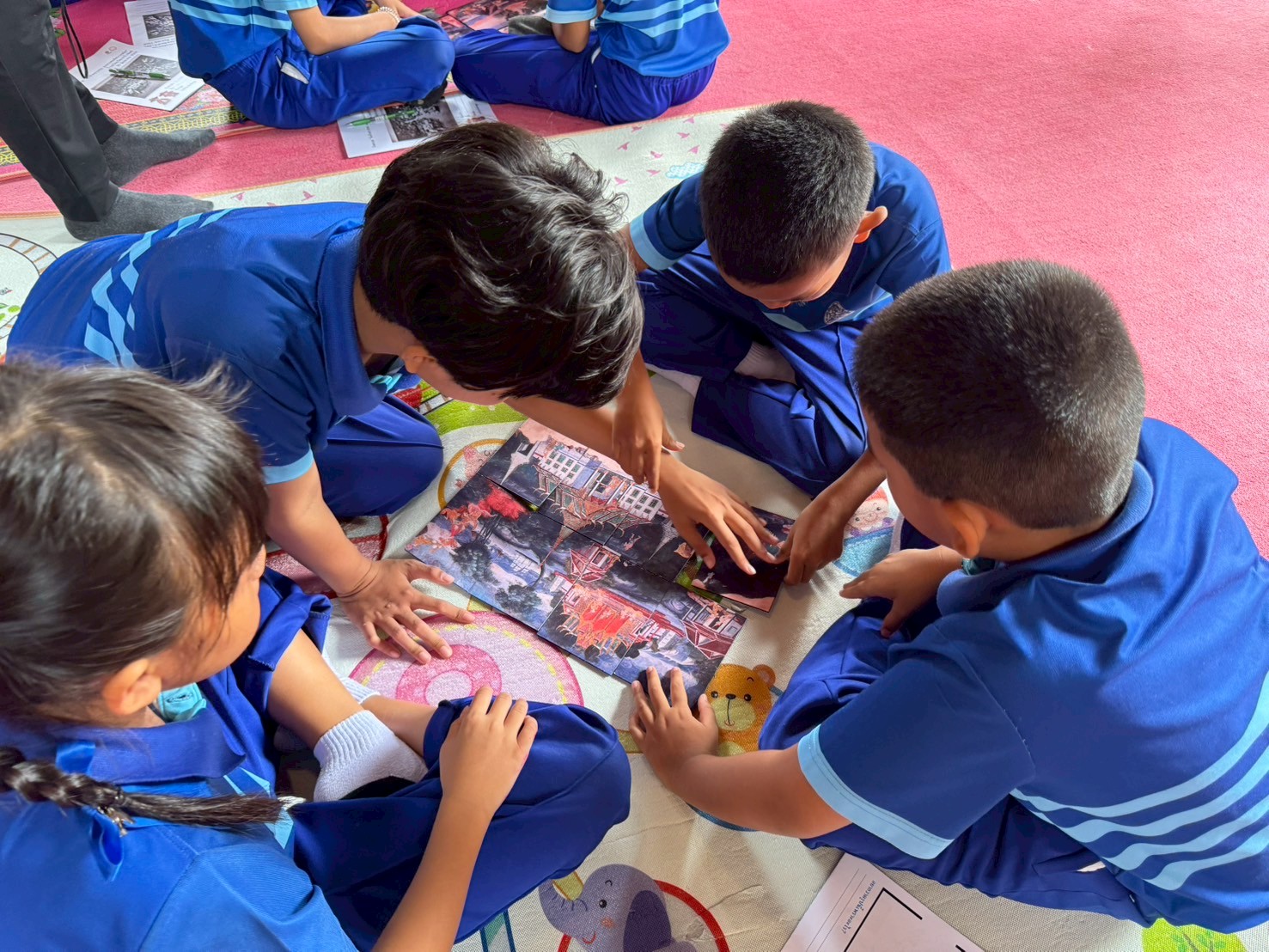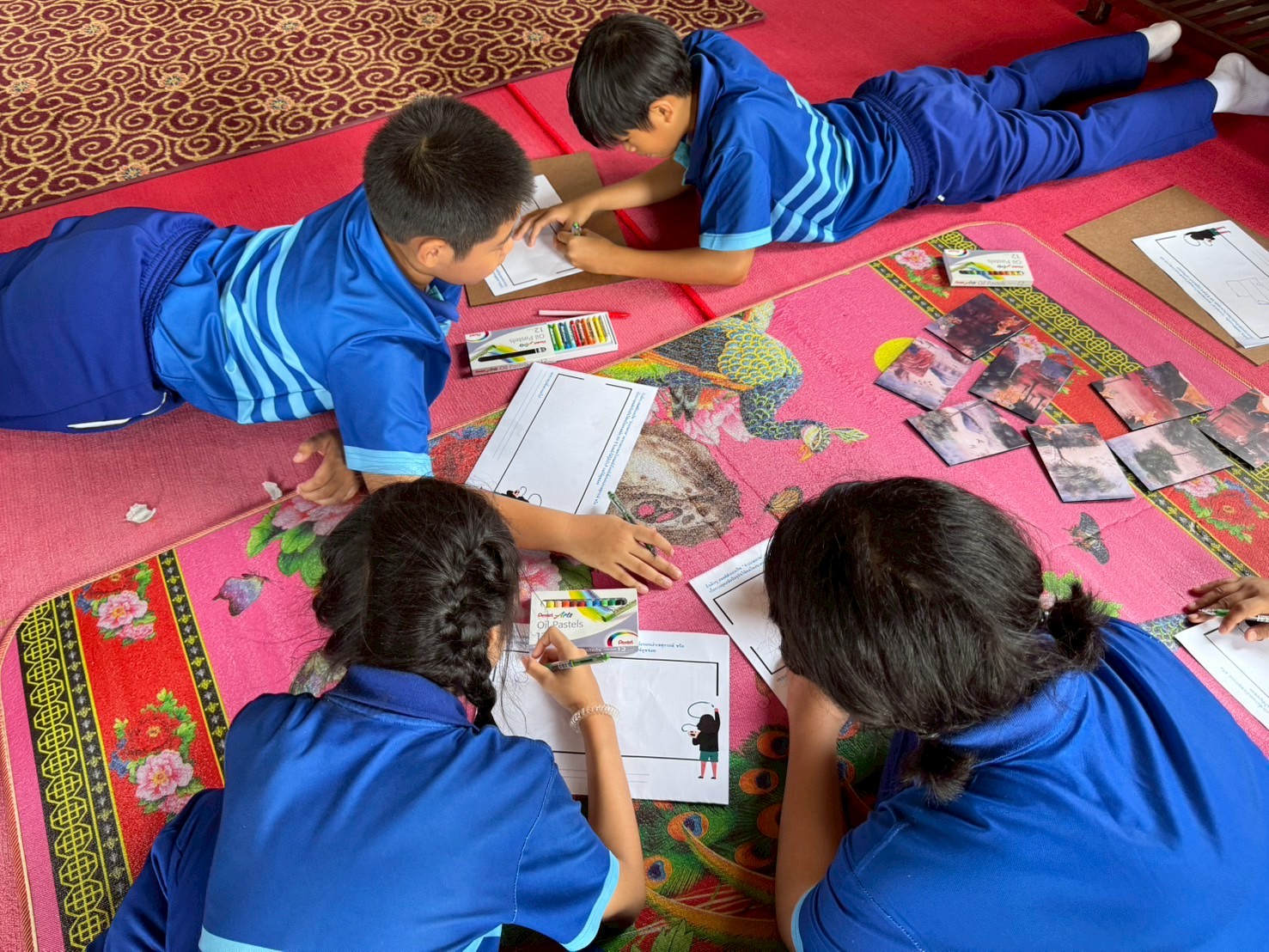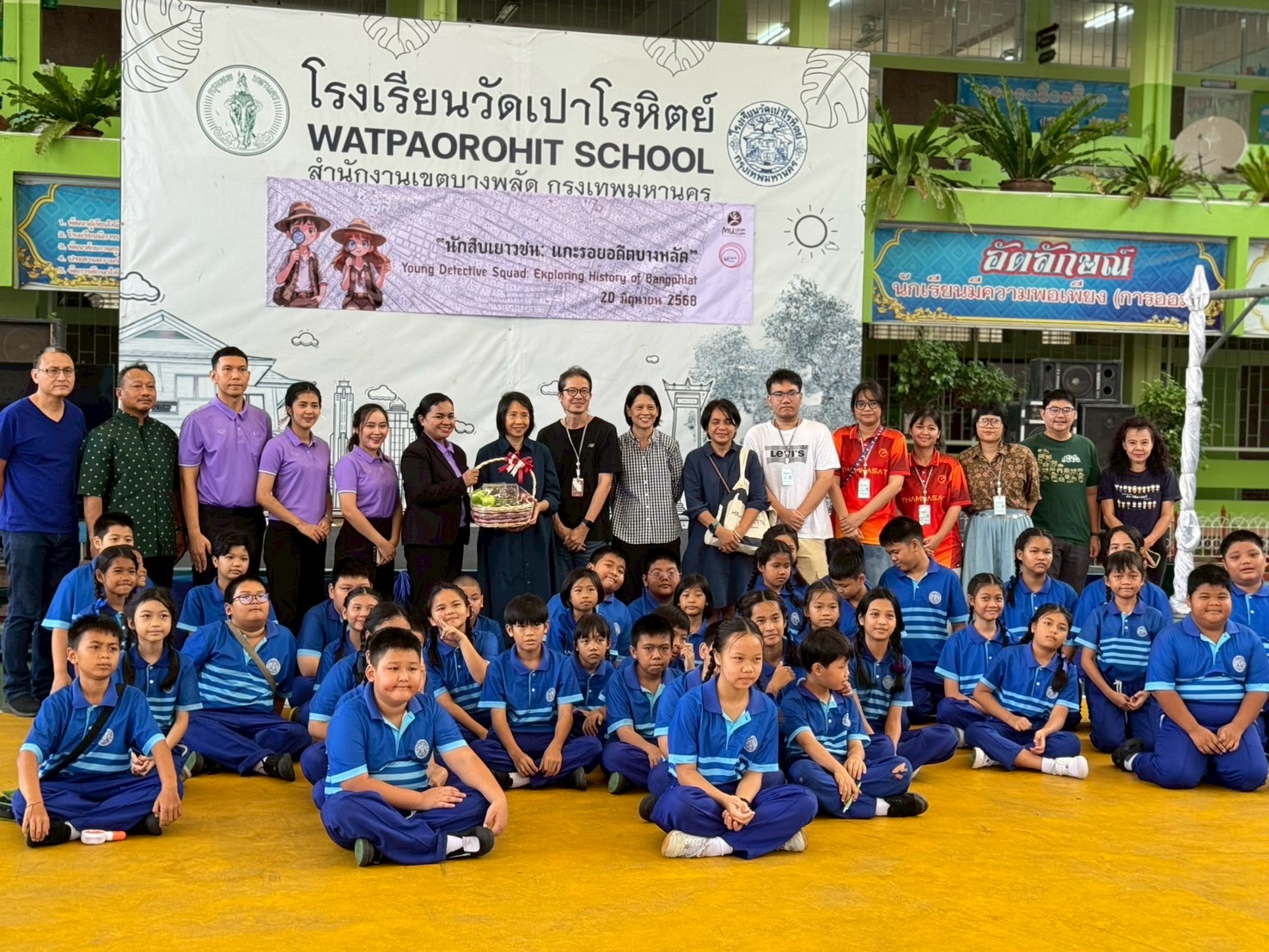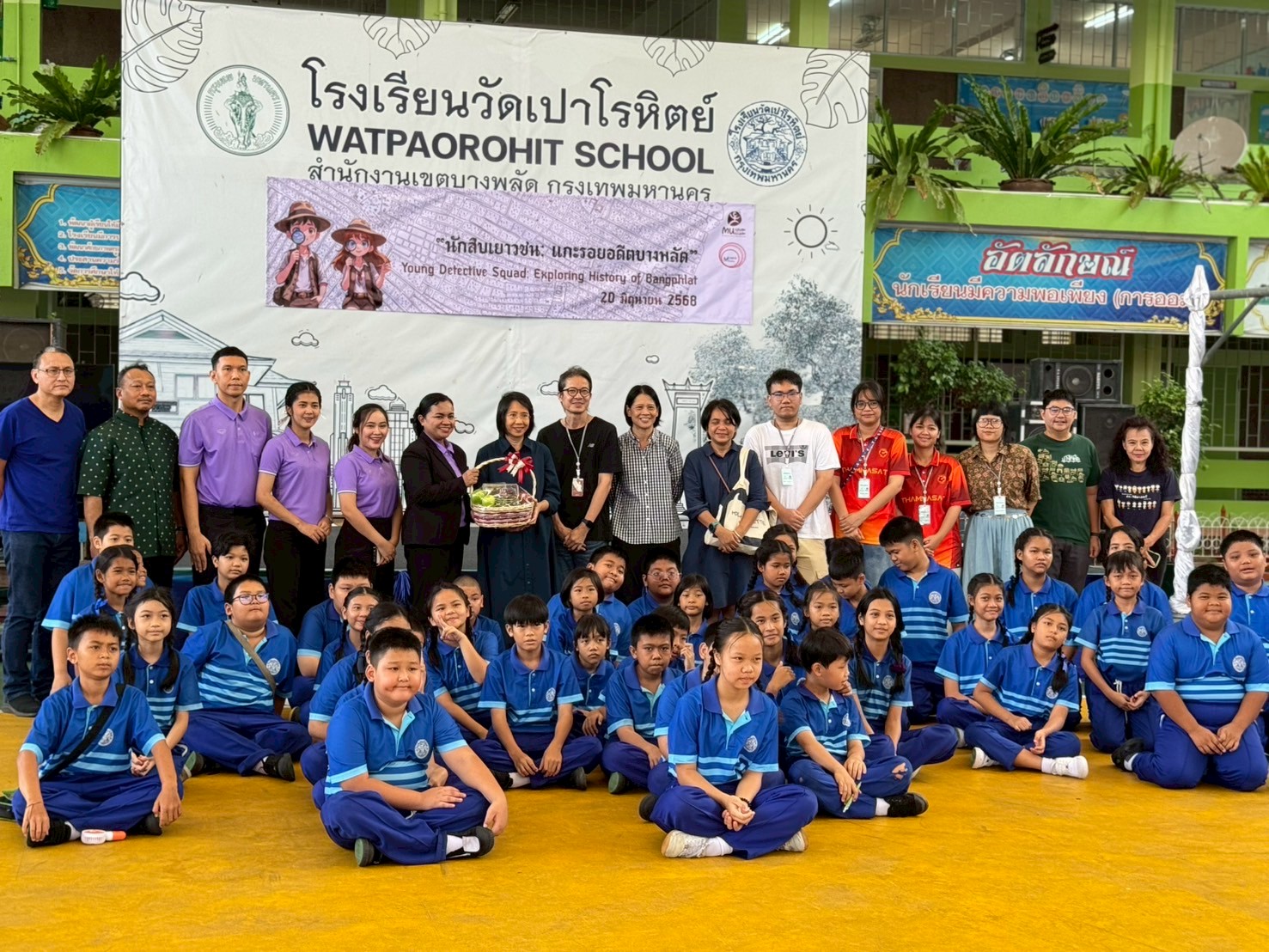
Young Explorers on the Trail of Bang Phlat’s Past (Museum Links – Wat Phaorohit School)
20 Jun 2025
In this Museum Links workshop, the grounds of Wat Phaorohit School and the adjacent monastery were transformed into a dynamic open-air learning lab. Students explored the deep history of Bang Phlat through four interactive stations, moving from the old world of orchards and canals to the story of a local hero, and from mapping their own daily journeys to creatively reimagining temple murals. Throughout the day they learned by doing—observing, questioning, and telling stories—while building confidence and teamwork. The workshop opened their eyes to the hidden heritage around them and helped them see how the past still shapes the places where they live today.
The day began with an engaging session called “Bang Phlat in the Past,” led by Ajarn Poom Phuthimahatma, who painted vivid pictures of the orchards, canals, and the people who once shaped this riverside community. With that inspiration, the students of Wat Phaorohit School embarked on a journey of exploration without even leaving their school grounds, as the temple precincts transformed into four lively learning stations.
The first station, Fruits & Farms, took the students into a small local museum on the school grounds. One room was dedicated to the area’s former orchard life, and under the guidance of the museum’s curator, “Pee Berm” (Narueporn Panichakarn), they learned about old farming tools and how they were used. Surrounded by black-and-white photographs, they began to understand how orchards and canals were once the lifeblood of the community. A short bingo game at the end added fun, but it was the hands-on demonstrations and storytelling that made the past come alive.
The second station, People & Places, introduced the remarkable life of Chao Phraya Mukhmontri, known affectionately as “Than Aub,” a figure whose vision and service led to the founding of Wat Phaorohit School. Through maps and historic photographs, students traced his contributions to education, public health, and infrastructure. Many remarked on how inspiring his dedication was.
Next came My Daily Journey Map, a station where students turned their own daily routes into stories. They drew maps of their journey from home to school and compared them with their friends. In the process, they discovered new details in the familiar, realising that places they pass every day hold more meaning than they had thought.
The final station, Past Meets Present, was held inside the temple’s ordination hall. There, the students examined intricate mural paintings, pieced together jigsaw puzzles of old scenes, and then, with worksheets and pencils, added their own images of modern life – mobile phones, trains, favourite cartoons – blending today’s world into centuries-old scenes. By the end of the day, each group presented their findings and their creative work, with voices full of enthusiasm and their worksheets showing careful observation and imaginative thinking.
This workshop left a lasting impact. Nearly 90 percent of the students said they would gladly take part again if given the chance. The four learning stations made history come alive in a way that traditional classroom lessons rarely achieve. Many students were especially inspired by the story of Chao Phraya Mukhmontri, feeling proud of their community and the legacy he left behind.
The mural activity, too, was unforgettable. For many, it was the first time they had taken a close look at these community treasures. Students described the experience as “fun, exciting, and a new way to see the place we live,” leaving with a stronger sense of connection and a desire to know more about their home.
